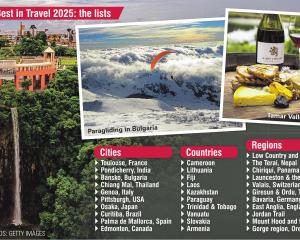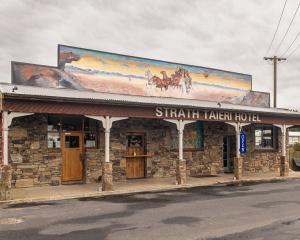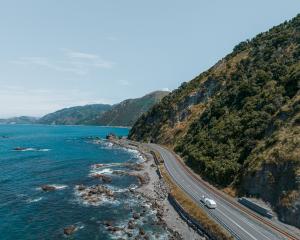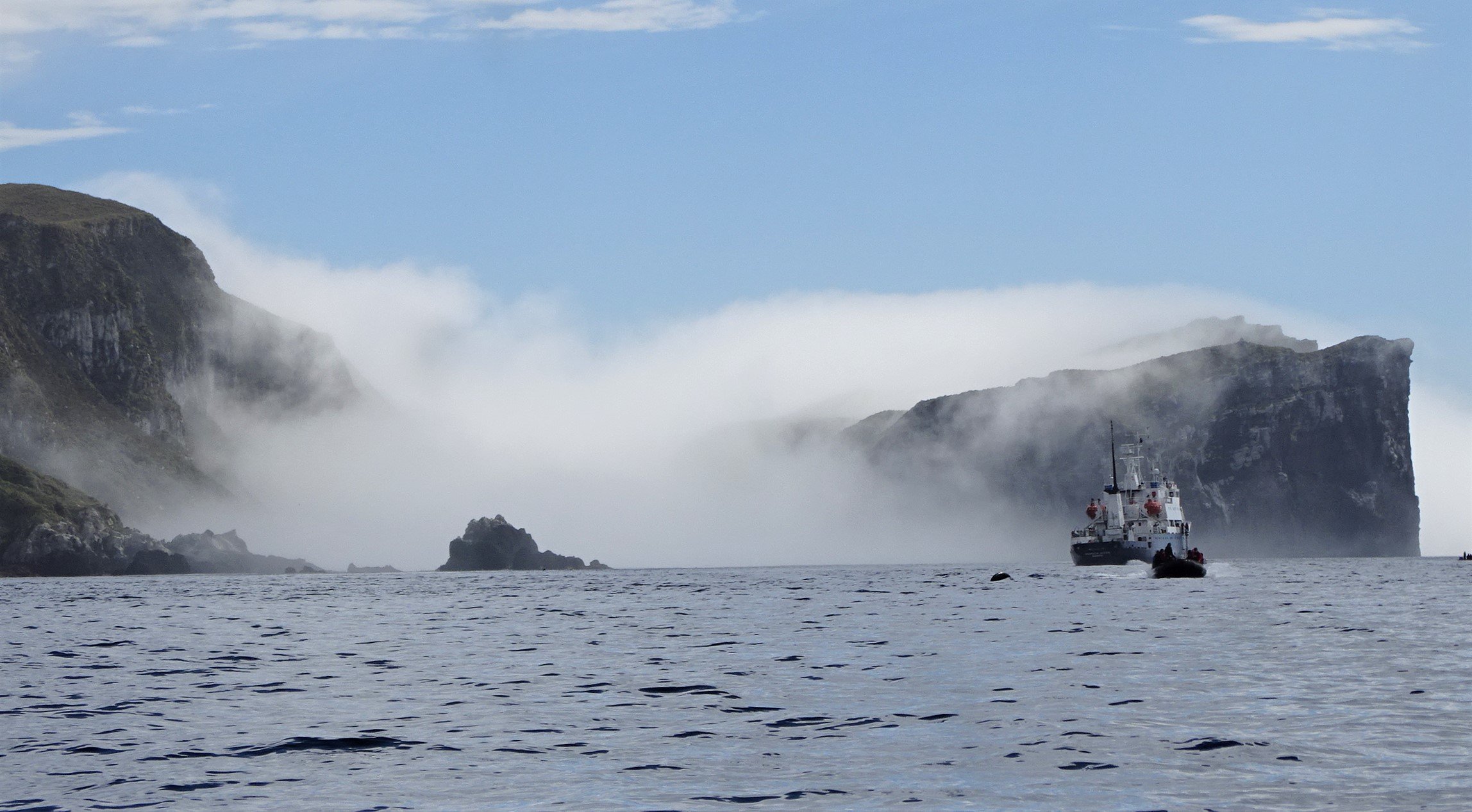
New Zealand’s sub-Antarctic islands are one of few places remaining in the world where you can experience authentic wilderness and abundant wildlife with no humans living there.
Not only are they within our locked-down borders, but there is a New Zealand tour company that can take you “over seas” to get there.
Many New Zealanders have never even heard of the sub-Antarctic islands and would probably guess the Auckland Islands were somewhere in the Hauraki Gulf.
The Snares Islands/Tini Heke, the Auckland Islands/Motu Maha, the Bounty Islands, the Antipodes, and Campbell Island/Motu Ihupukuare lie in an arc southeast of Stewart Island in the Great Southern Ocean between the latitudes of 47deg and 53deg.
Often referred to as New Zealand’s “forgotten islands”, the five groups are remote, uninhabited, on no regular shipping route and access to them is restricted.
Sitting in the path of the Roaring Forties and Furious Fifties, they are constantly lashed by strong westerly winds and storms; rain falls on about 300 out of 365 days a year and the average temperature is 5degC.
And you have to cross some of the roughest seas on the planet to get there. You need a permit to even set foot on Auckland and Campbell islands (and only at certain landing places), and the nearest you can get to the Snares, Antipodes and Bounty islands is in a Zodiac inflatable boat, cruising the shorelines.

Our Heritage Expeditions “Galapagos of the Southern Ocean”, 13-day voyage began with a dinner in Dunedin hosted by Aaron Russ, son of company founder Rodney, where it was announced that because of Covid restrictions we would not be visiting
Australia’s Macquarie Island but would instead visit Antipodes and Bounty islands.
Day two
It was an early start and a scenic bus ride through The Catlins, arriving at Invercargill for lunch and a final medical check. Everyone passed and it was back on the bus for the short ride to Bluff and our home for the next 12 days, the Spirit of Enderby.
Constructed in 1984 for polar and oceanographic exploration, the ice-strengthened Russian ship (formerly known as the Professor Khromov) was designed for sturdiness and reliability rather than luxury.
With that in mind and the likelihood of experiencing the rigours of the Southern Ocean, we had booked a mini suite, comprising a double bed, a separate living space and our own bathroom.
The sea conditions, however, were perfect as the ship entered Foveaux Strait, headed down the east side of Rakiura/Stewart Island and everyone tucked into their first three-course dinner of the voyage ... but it was not to last.
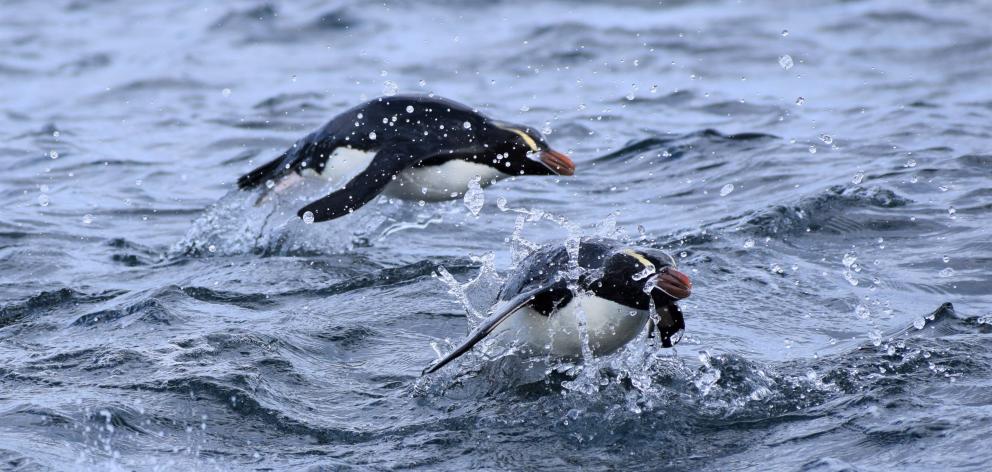
A northerly storm blew in overnight, producing 5m-7m swells and making it impossible to anchor safely at the Snares or launch the Zodiacs. A decision was made to head directly to the Auckland Islands and possibly catch the Snares on the way back.
For the next 24 hours many passengers, myself included, experienced the effects of seasickness. We either stayed in our cabins clinging to furniture, beds, railings, or anything that might stop us from being tossed around or ventured out on deck for the bracing effects of sea spray and to watch the albatross or stare at the horizon. Unfortunately, that meant I missed the first buffet breakfast, two-course lunch and two informative lectures by tour leader Chris Todd on the Auckland Islands and its early human occupation. Remarkably, archaeologists have found evidence of early Polynesian occupation dating to the 1300 or 1400s. It is the southernmost site recorded of prehistoric Polynesian voyages to date.
Day four
We arrived in Ross Harbour overnight, and despite 50-knot winds and rain showers, the expedition team decided to launch the Zodiacs.
Our first stop was on the northern end of the main Auckland island where Hardwicke, an agricultural settlement and whaling station, had been established in 1849.
By August 1852, it had been abandoned due to the miserable climate, poor soils, treacherous seas and ferocious winds. Even the whaling station was uneconomic.
Today, the only reminder of the town is a few scattered bricks on the forest floor and the original picket-fenced cemetery.
After the failed settlement, the most common reason for humans here was shipwrecks. In Erebus Cove, we saw the remnants of a message carved into the trunk of a rata tree: ‘‘H.M.C.S. VICTORIA NORMAN IN SEARCH OF SHIPWRECKED PEOPLE OCT 13TH 1865’’. Survivors of the shipwrecked schooner Grafton spent 19 months on the Auckland Islands, and HMCS Victoria was sent to search for survivors and victims.

An early morning started with the obligatory quarantine check by our guides to make sure our boots, waterproof jackets and packs were clear of seeds or other plant or animal matter before our Zodiac ride to the south end of Enderby Island. It was the the least we could do considering the huge amounts of time and money that have been invested in making some of these islands pest-free and predator-free.
We split into three groups and the more energetic group headed north on a 12km trek around the island.
There was no obvious track, just waist-high tussock to wade through, hidden bogs to fall into and sea lions popping up somewhat terrifyingly, expressing their displeasure at our presence.
On our way along jagged, rocky cliffs and seascapes, we saw yellow-eyed penguins (hoiho), light-mantled sooty albatross, giant petrels, red-crowned parakeets/kakariki, Auckland Island teal, sub-Antarctic snipe and the iconic southern royal albatross (toroa), with a wingspan in excess of 3m and weighing about 9kg. Megaherbs, giant flowering plants up to a metre wide and tall, unique to the sub-Antarctic Islands provided a bright splash of colour.

Day six
There was an early morning Zodiac cruise around Musgrave Inlet to see rockhopper penguins, amazing basalt rock formations and extraordinary caves and caverns.
In the afternoon, we walked through a rata and dracophyllum forest, to the site of a Coastwatchers’ station in Tagua Bay. During World War 2, young scientists were posted here to keep watch for Russian or Japanese enemy ships.
Day seven
A Zodiac ride around the outer reaches of Perseverance Harbour took us to see the world’s rarest duck, the Campbell Island teal, as well as endemic Campbell Island shags, white-fronted and Antarctic terns, black-backed gulls and a pair of light-mantled sooty albatross nesting high on the cliffs. We passed the most amazing basaltic columns on the way to a sea lion colony of 30 or more animals sleeping or fighting to protect their turf. Wonderful!
We zipped past the anchored mother ship on our way to the inner reaches of Perseverance Harbour and the remains of what had been a farming homestead in Tucker Cove, then on to Camp Cove and the ‘‘world’s loneliest tree’’. The sika spruce, the only one of its species down here, was believed to have been planted by Lord Ranfurly between 1901 and 1907.
For one passenger, the visit was especially emotional: Joanne Laing’s father had worked here as a meteorologist in the early 1950s.
In the afternoon, we landed at the now-abandoned New Zealand Meteorological station and hiked to Col Lyall Saddle for stunning views of the coastal cliffs. Along the way, we saw dozens of nesting southern royal albatross. There was almost no wind, the sky was blue with few clouds and the temperature was quite warm. One of the guides said she had visited Campbell Island seven times and had never experienced such perfect weather conditions.
Day eight
A range of lectures from the expedition team kept us entertained as we headed towards Antipodes Island, including one on the eradication of pests from Campbell Island and another on the history and wildlife of the Bounty and Antipodes islands.

Day nine
Our first sighting of the Antipodes Islands was ghostly and ethereal, shrouded in sea fog. Luckily, this lifted in time for our expedition.
Sheer cliffs rise from the wave-battered rocks to a tussock-strewn plateau which meant there was nowhere to safely land on these volcanic islands, but that didn’t matter. Cruising along the coastline, we passed masses of bull kelp tumbling in the waves and spotted erect-crested penguins, endemic to these and the Bounty Islands, on the rocky shore. Many had young chicks. There were also rockhopper penguins and the Antipodes albatross. The two ‘‘twitchers’’ on my Zodiac nearly fell overboard in their excitement after I spotted Antipodes Island parakeets on the rocks and a Reischek’s parakeet in the tussocks.
Day 10
Another blue-sky day greeted us as we arrived at the Bounty Islands. As the islands have no safe anchorage or easy landing sites, this would be another day in the Zodiac, scouting along the sheer granite cliffs. Discovered and named by Captain William Bligh in 1788, just months before the infamous mutiny, the Bounty Islands are 700km east southeast of New Zealand. The total land mass is 135ha and they have virtually no soil or vegetation.
Yet these remote, isolated rocky mounts are bustling with life. The skies above swarmed with wheeling, arcing seabirds. Everywhere we looked there was wildlife, from the diving and leaping rafts of penguins, to Salvin’s albatross nesting high up on the cliffs and noisy colonies of seals on the rocks below. These islands are one of the main bases for the New Zealand fur seal in the sub-antarctic.
Day 11
The swell had picked up overnight and the Snares were in the path of another storm, so the expedition changed plan once more, to sail on to Bluff, pick up a pilot and head over to Paterson Inlet, Rakiura/Stewart Island for a guided walk.
Day 12
There was fresh snow on Mt Anglem/Hananui on Rakiura/Stewart Island as we headed up Paterson Inlet, anchoring just off Ulva Island. We landed on the beach and split into five groups, each with a guide. Not long into our walk we saw saddleback, rifleman, kaka, kereru and Stewart Island robin. The biggest thrill of the day for me was my first sighting of a kiwi, a Stewart Island brown (tokoeka) in its natural habitat.
Our last night on board was a chance to relive the journey through a stunning slideshow, featuring shots taken through the journey and set to music by one of the expedition team, followed by a sumptuous five-course dinner.
The expedition team, chefs and crew had all worked tirelessly to deliver a first-class, out-of-this-world experience.



